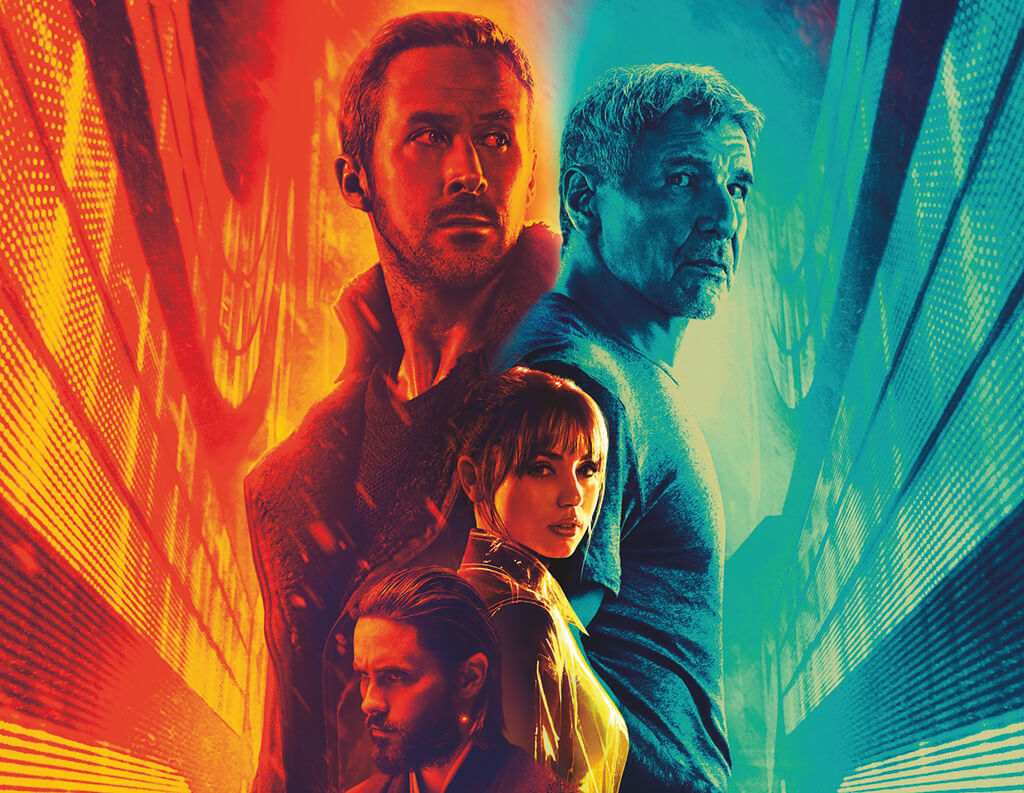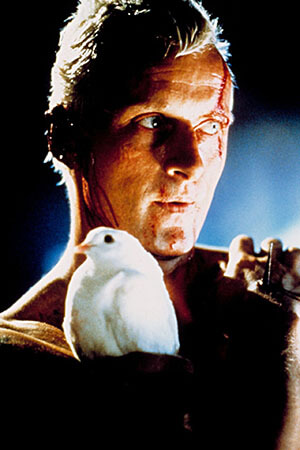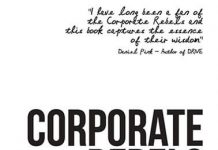Can a sequel ever be an equal? Blade Runner 2049 is the litmus test; BV movie critic JOHN MARINUS plunges into movie history and a depiction of a dystopian future
A CATHARTIC monologue pairs well with an unrelenting downpour, while nothing beats a genial powdering of snow for finally hanging loose and making peace with the bullet hole in your gut.

Both work as resolution, just shades apart. When a Londoner wants to project pathos onto a cityscape he adds rain, a Montréalais adds snow. Blade runner 2049 revisits the city of Ridley Scott’s 1982 Original, just paints it with a different palette. Los Angeles 2049 is indeed a colder place: sterile rather than putrid; with nothing left to rot, this world can merely crumble and rust. The grey corporate ziggurats don’t so much loom as stand dormant; only through the cracks do we see a residual neon glow, as the deluge laps tauntingly at the massive seawall. There is a glacial weight to this film to match its pace.
Agent K (Ryan Gosling) is a LAPD nexus-9 replicant, a new generation of synthetic humans, tasked with the hunting down of rogue old model replicants. Agent K stumbles on a mystery that eventually leads him to Deckard (Harrison Ford) – the central character and eponymous Blade Runner of the original 1982 movie – and subsequently the replicant resistance. His duty is to follow orders, not to feel or think, a fact hammered home by his boss, Lieutenant Joshi (Robin Wright), and by the post traumatic baseline test, part polygraph, part word-association interrogation based on the Voight-Kampff test of the original.
A milky-eyed Jared Leto chews the scenery a bit but manages to convey all we need in an arch-villain in his portrayal of Niander Wallace, the replicant magnate who supplanted Dr Eldon Tyrell, and who aspires to be something more celestial with a single dense soliloquy. Wallace’s assistant Luv (Sylvia Hoeks) is K’s meticulous nemesis.
The film feigns a heart in the character of Joi (Ana de Armas), as her voice sweetly welcomes K home. Joi is the consolation K needs but she is a product, a hologram, programmed to be whatever you need her to be. You believe her: this isn’t ambiguity so much as cognitive dissonance. You’ll forgive her almost grotesque attempts at intimacy because it rings true. It’s almost as if K really does have a significant other, a past, a purpose… but then we cut away to a shot of a towering neon billboard selling Joi.

This is a real Blade Runner movie, with the same DNA as the 1982 Blade Runner, the cult classic for which Ridley Scott released a final cut in 2007 because he wouldn’t sign-off on Warner Bros’ Director’s Cut.
Did anyone really think Ridley Scott was going to let his work be treated like some popcorn-fodder cash cow like Independence Day or Jurassic World? We are in safe hands here: Hampton Fancher is back as screenwriter, Hans Zimmer’s score soars (and is visited by the familiar synths and chimes of the original’s score by Vangelis). With films like Arrival, Enemy, and Incendies, Denis Villeneuve has proved himself not merely capable director but a serious filmmaker, and no one is going to ask cinematographer Roger A. Deakins to prove a damn thing.
The Blade Runner films are icons of filmmaking, but icons aren’t all created equal. These films are great because the craft is in service to the art. If this all sounds preposterous that’s because you are thinking of Star Wars: impressive façade with just enough heft to bear reference and sell merchandise. The Blade Runners are something else. They are the inheritors of a cine/literary tradition. There’s the source material of sci-fi author Philip K. Dick (whose story Do Androids Dream Of Electric Sheep? inspired the original Blade Runner film) and names like Aldous Huxley and Stanislaw Lem before him.
In films like Children Of Men, 2001: A Space Odyssey and Solaris – all the way back to Metropolis and Rossum’s Universal Robots – science fiction is the natural laboratory of the modernist project. These works use the heightened contrasts of dystopia to explore the nature of authenticity, of autonomy, of identity, of meaning – and failing that, to provide consolation in a desolate world.
The Blade Runner films are not only informed, they are just as much a part of that tradition of sleepwalkers and replicants, hollow men and holograms.
The viewing public was guaranteed a decent film, yet the critical reception of Blade Runner 2049 was one of relief – and its poor box office performance was seen as a let-down. Sequel fatigue is a common condition: for years the highest grossing films have been either sequels or franchises, and the elitist spits out the word Hollywood as a metonymy for all that is wrong with the artless entertainment industry.
The elitists have a point: Hollywood is an industry, and the bloated gatekeepers are financially, rather than artistically, bound. Their primary concern is what sells, and that makes them rather conservative, banking on things that resemble things that have sold before. This has also led, more insidiously, to the torrent of passable “safe” films: demographic pandering-by-the-numbers, relying on formula and cliché.
These films can still be well crafted, like the Marvel instalment Guardians Of The Galaxy Vol. 2; or they can be The Fate Of The Furious, The Big Sick or Home Again, Despicable Me 3 or Boss Baby. Some are decent films, but they are all safe investments, engineered with varying levels of craft to cater to a demographic and market share, and no one will be talking about them a year from now.
Efforts like Franklin Leonard’s Blacklist, an annual survey which shines a light on worthy original screenplays floating round Hollywood, are part of the solution. Blacklist has resulted in a number of gems like Arrival and Manchester by the Sea, but they are still few and far between. Independence Day did not rob some wholly novel masterpiece of a spot; if anything, it just pushed back a year some equally formulaic drizzle like Geostorm.
Lack of original stories has never been the harbinger of cultural stagnation, and bemoaning it is a lazy and petulant practice. Culture endures through the regurgitative process called tradition, as art weathers fashion and popular demand. Discerning? Yes. But not snobbish, because a film such as Blade Runner 2049 can still be made.


































